In this article, I’ll look at opportunities for innovation in language learning technology in 2025 and beyond.
When ChatGPT became widely available at the start of 2023 it inspired hundreds of established language apps and independent developers to create chat bots for conversation practice.
Two years on, the market is flooded with “AI language tutors”. I’ve come across 25 in the past couple of years, without ever actively looking for one. Some of them existed pre-ChatGPT (for example Jumpspeak and Loora) but now they’re all using roughly the same generative AI technology to provide conversation practice for language learners.
There’s no denying that chatting with an AI chat bot is a great way to practise a foreign language. I’ve used it for Spanish and have really benefited. The issue is that there are now hundreds of apps providing this feature. Some apps are already doing it especially well, so for anyone looking to be truly innovative in this space, creating an AI chat bot is no longer a way to do it. On top of that, a conversational chat in any language is now available for free through the ChatGPT interface, using voice or text.
The moderators at the /Spanish sub on Reddit have even added something to their official rules to stop people trying to promote their chat bots in the forum. The rules say “there's simply tons of chat bots already, another one is completely unnecessary”.
Are Chat Bots Popular With Language Learners?
From the learners’ point of view, there is a significant interest in these types of AI language tutors.
Several of these types of apps are making large amounts of money. For example, according to Sensor Tower, Praktika is making $1million per month in revenue and TalkPal is making $140k per month. This suggests that not only are learners trying them but they are sticking around as longer term subscribers.
We Need to Be Aware of the Weaknesses
Keep in mind that while these apps are undoubtedly good for conversation practice, there are significant weaknesses in AI’s ability to give accurate feedback on learners’ mistakes. That’s a topic I’ve already written about in a lot of detail so I won’t go into it here but, about 10% of the time, AI will either miss a mistake or correct language that was absolutely fine. Disappointingly, AI language tutor apps don’t include disclaimers about this and I’m not sure how aware the users are.
How Do We Innovate Beyond the Chat Bot?
I’m keen to find apps that are doing genuinely innovative things and trying to use AI to go one step further than the standard chat bot. I would define a “standard chat bot” as a conversational experience delivered through text messages, text-to-speech audio or both combined.
Finding ways to innovate has been especially important to me this year because, after running an English language practice app called Go Correct for the past 7 years, it was time to iterate on that app and work out how to take advantage of what AI can now offer.
Below I’ll talk about some innovative uses of speech/image-generation and generative AI in the language learning space and predict what they indicate about where this technology could be heading.
I develop products aimed directly at learners, so I’ll focus on those here but there are of course teacher-focused products, such as Learncube, doing interesting things with AI.
Marverly: Combining Chat Bots With Real Teachers
The Marverly app, at its core, is ‘just another’ AI chat bot for language practice but they have an interesting angle. They’ve teamed up with real language teachers who have large social media followings and created AI clones of their voices so that app users can get closer to the experience of having a real conversation with the teacher.
For Marvely the main advantage of this may just be the marketing aspect, as it means they have several very popular influencers who now have a reason to promote the app to their followers.
As an innovative idea it’s also interesting because it reveals how AI can be combined with traditional human teachers. Maybe in the near future all language teachers could enable their students to continue interacting with an AI voice clone of themselves after the lesson?
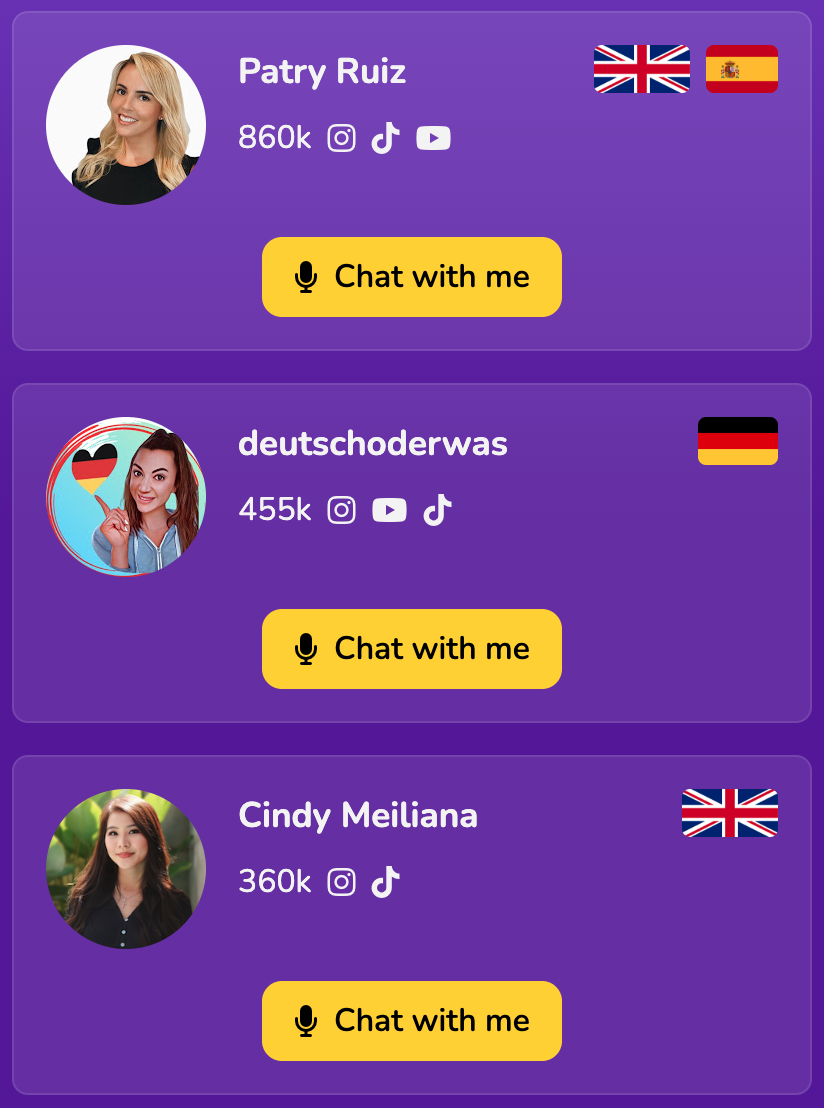
Again, this is another variation on the AI chat bot.
What sets Call Annie and Praktika apart from other language practice chat bots is the relatively realistic animated human face that you interact with. Other apps are primarily text-based with just a still picture of the ‘person’ you’re talking to.
There are a lot of apps where you can talk to animated avatars, sometimes referred to as “AI girlfriends”, but I think Call Annie and Praktika have some of the more realistic-looking characters.
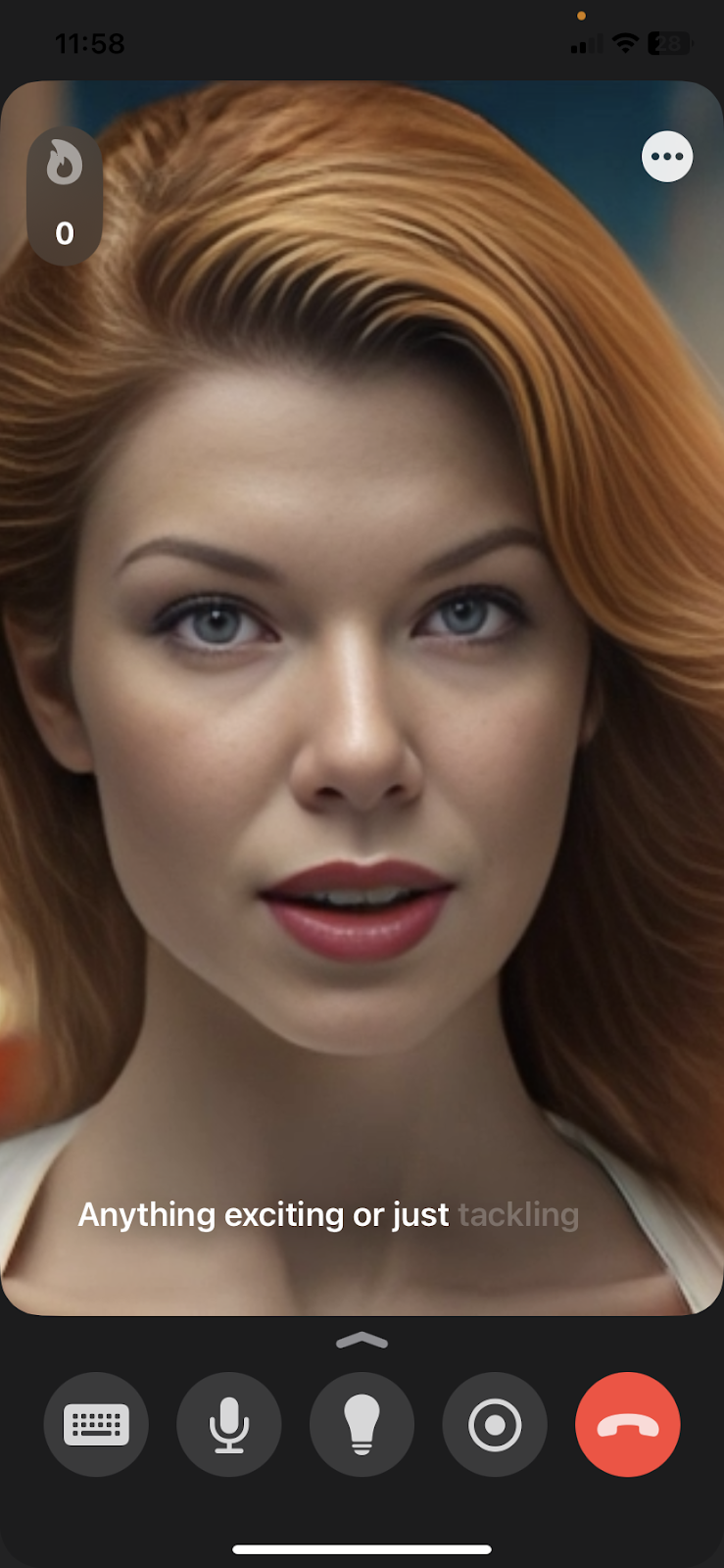
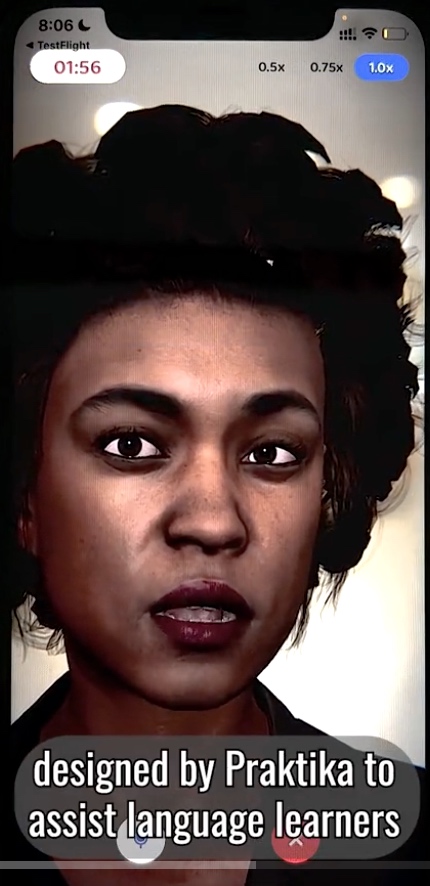
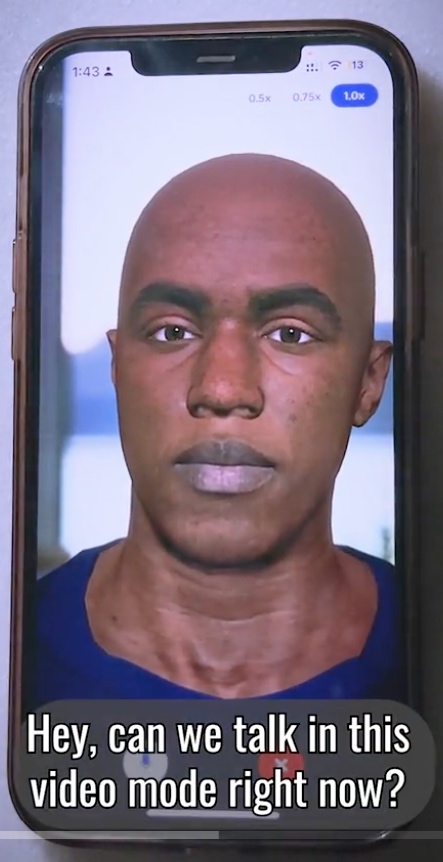
Praktika image credits:tps://www.tiktok.com/@praktika_english/video/7260508573992619266
Call Annie also sends notifications with follow-up messages based on your previous conversations, just like receiving a message from a friend.

This is interesting because it hints at a future where AI conversation partners could look so realistic that the experience becomes almost indistinguishable from interacting with a real human in a virtual classroom.
Often: Human-Like Interaction
The app, Often, is the new version of the language practice app that I’ve been running for several years. In Often we use AI, not as a conversation partner, but to provide short daily speaking tasks. For example, to speak spontaneously for 1 minute about a random topic. We use AI to check that the learner was speaking on the right topic and in the right language.
Traditionally, language apps have had to provide practice through quiz questions with a right or wrong answer (think about the types of questions in Duolingo) but AI allows for much more open practice, where there are multiple possible right answers. This creates opportunities for practice activities that are more true to real life and more appropriate for higher levels.
Another goal with Often is to make it quick and easy to do a small amount of speaking practice every day, without the ‘fluff’ of a full conversation with a pretend human.
We also have other innovative ideas in the pipeline for how to incorporate AI into the app and those will be launching soon.
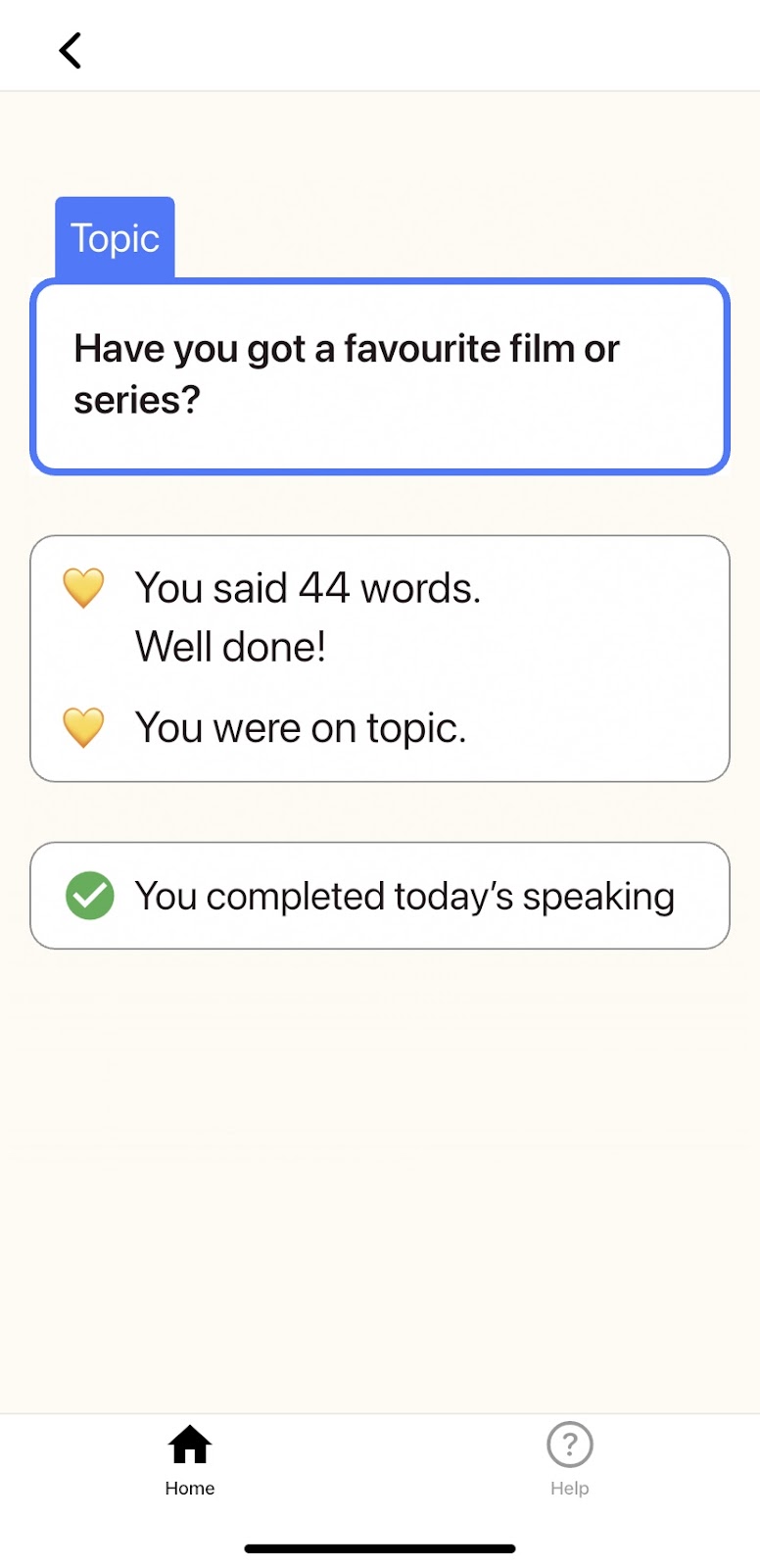
Spotify: Auto-Transcription and Analysis of Human Speech
Spotify is of course not a language-learning app but has a little-known new feature that launched in early 2024, which could be very useful for language learners. Some podcasts now have an auto-generated transcript that plays along in real-time and highlights each word as it is said.
Many higher-level language learners already use podcasts as a way of practising and this feature elevates that experience and makes it even more useful.
Some language practice chat bots already highlight each word of text as it is spoken by the computer-generated voice (Langua, for example) but seeing this done automatically on real natural human speech is especially useful, as that is always more challenging to understand.
I think there are opportunities for innovative language learning apps to incorporate a similar feature.
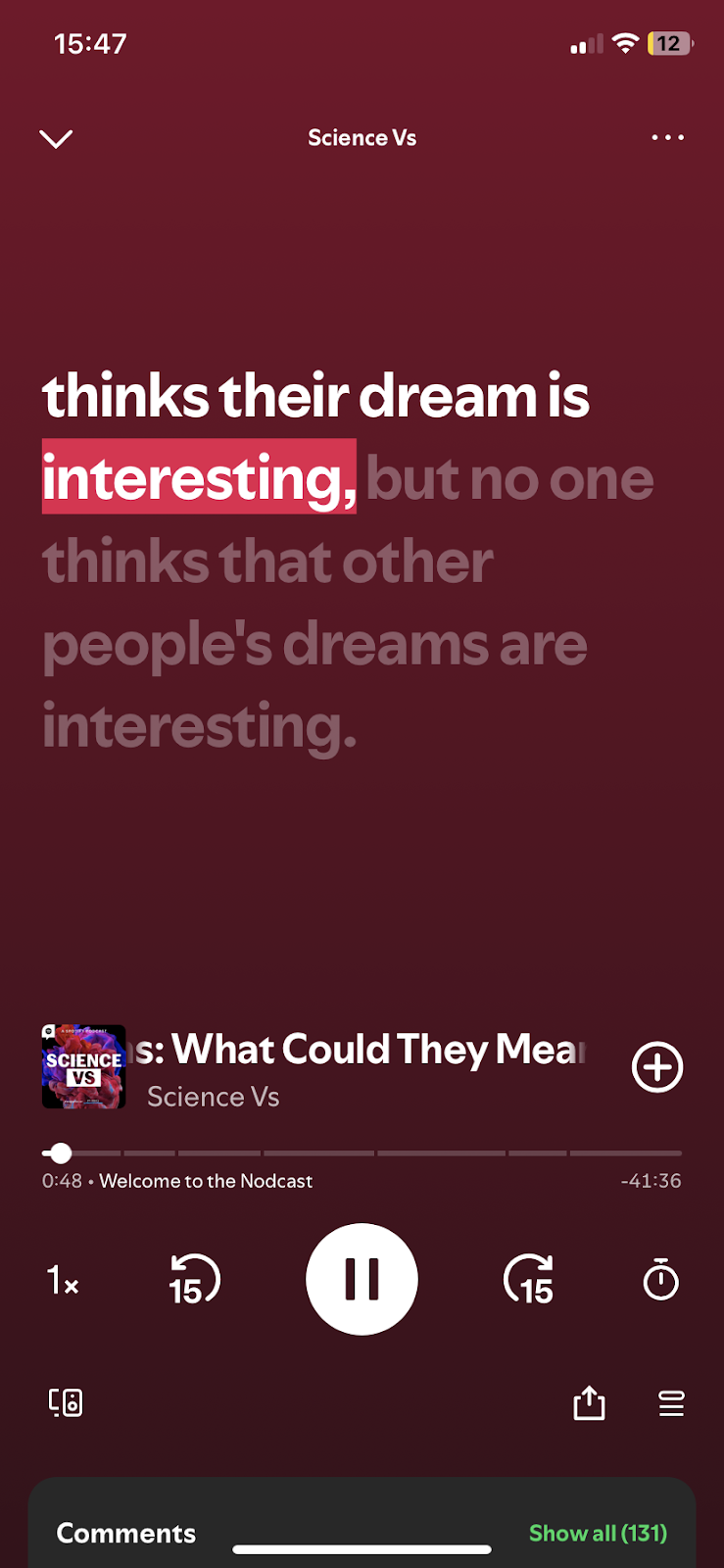
From This Point Forward, a Chat Bot Is Not Enough
To offer something unique and set themselves apart, language learning apps will need to find even more innovative and useful ways of harnessing AI. As we’ve seen here, that might be with more human-like conversational experiences, less rigid practice activities or automatic recognition of human speech.
I’m looking forward to seeing what else emerges and, hopefully, originating some of those creative ideas myself.
If you know any other examples of innovative uses of AI in language learning tech, I’d love to hear about them, so please get in touch with me on LinkedIn.

